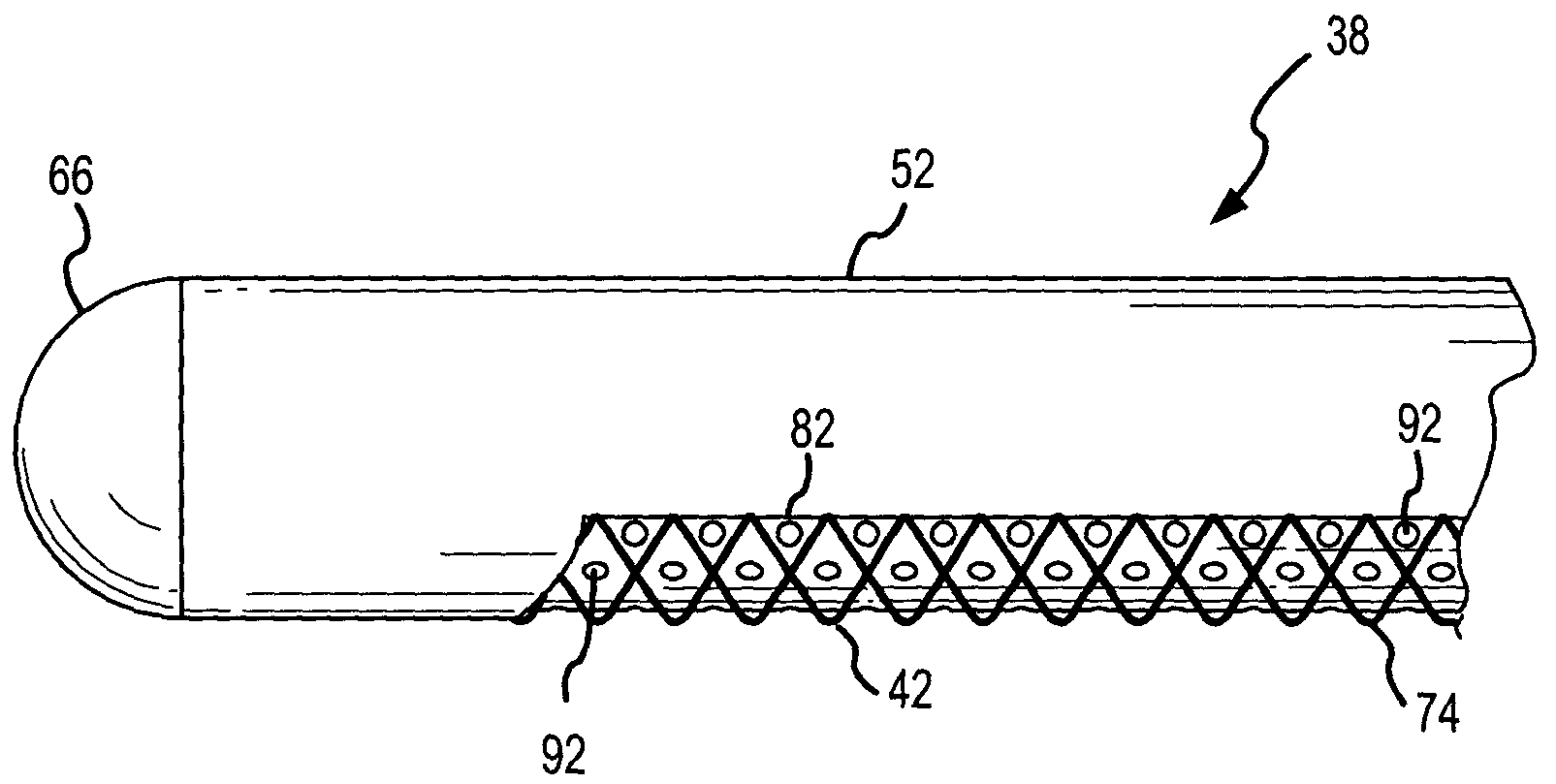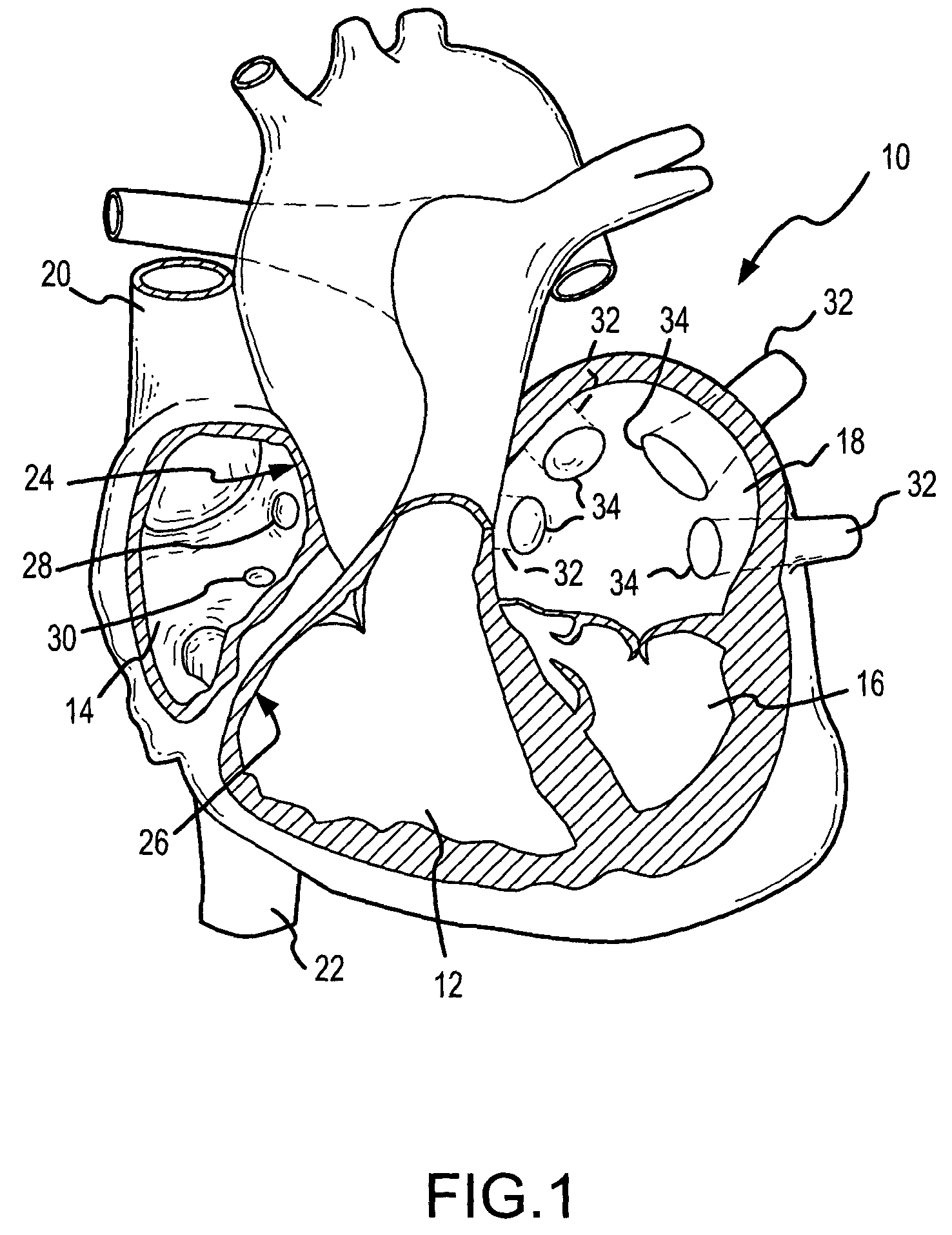Ablation catheter and electrode
a catheter and electrode technology, applied in the field of catheter ablation, can solve the problems of increasing the vulnerability to thromboembolism, varying levels of congestive heart failure, and significant patient discomfor
- Summary
- Abstract
- Description
- Claims
- Application Information
AI Technical Summary
Benefits of technology
Problems solved by technology
Method used
Image
Examples
Embodiment Construction
[0047]The present invention involves an ablation catheter employing an electrode with multiple conductive distributed strands arranged to distribute and deliver ablation energy to a target tissue. In one particular arrangement, the ablation catheter includes an electrode with multiple conductive strands configured in an interconnected braid or mesh-like pattern. Hereafter, an electrode including a plurality of wires or other energy conveying strands arranged in a weave, arranged in an overlapping, mesh-like, or spiral winding-like pattern, or configured in other braid-like patterns will be referred to as a “braided electrode.” Once in place within the heart or in the proximity of the target tissue, the braided electrode may be pressed against or located in close proximity to the target tissue to convey energy to the target tissue to create a lesion. Hereafter, the term “ablation energy” will be used to refer to any energy source used to oblate tissue, such as radio frequency (RF), d...
PUM
 Login to View More
Login to View More Abstract
Description
Claims
Application Information
 Login to View More
Login to View More - R&D
- Intellectual Property
- Life Sciences
- Materials
- Tech Scout
- Unparalleled Data Quality
- Higher Quality Content
- 60% Fewer Hallucinations
Browse by: Latest US Patents, China's latest patents, Technical Efficacy Thesaurus, Application Domain, Technology Topic, Popular Technical Reports.
© 2025 PatSnap. All rights reserved.Legal|Privacy policy|Modern Slavery Act Transparency Statement|Sitemap|About US| Contact US: help@patsnap.com



